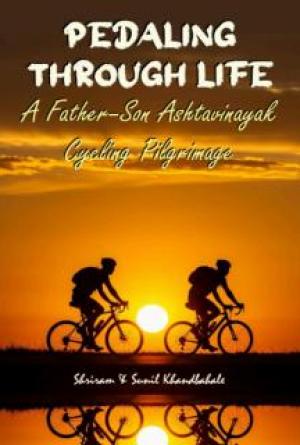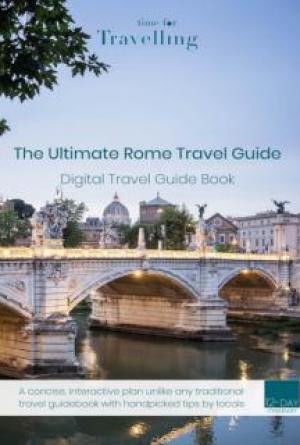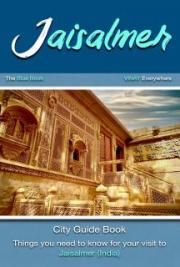CONTENTS
FIRST STEPS
EQUIPMENT
TENT
SLEEPING BAG
LIGHTING
COOKING
CAMPFIRE
GAS BARBEQUE
COOKING & EATING UTENSILS
KEEPING FOOD FRESH
TENT LIVING AREA
BAD WEATHER
FIRST AID & SAFETY
 FIRST STEPS
FIRST STEPS So your thinking of trying out camping, yes you could head off into the great unknown, but without a few basic trial camping trips that would be utter madness and dangerous.
Where ever you are in the world, chances are there will be camping sites somewhere near you, excluding the obvious of course. There are many camping sites advertised on the Internet and in local directories.
The traditional format after choosing where to go, is to pull up - pay a fee and you are allocated a camping area. Just a note, if they are very busy you may not have too much choice in where you are allocated.
It is always wise to check the site’s availability well in advance in case you are required to pre book, especially in the peak holiday season.
The basic necessities such as toilet, shower, fresh water will usually be nearby. More often than not there will be heaps of other facilities available, but this will vary greatly. I've even heard of a site that has it’s own cinema! What facilities they have is particularly important for example, if you don’t intend to do a lot of cooking, you’ll need to know if there are cafes or restaurants on site or close by.
Should you be thinking of camping within a reasonable distance to home, it’s a good idea to drive out and check over the site that way you’ll avoid any nasty surprises.
Different sites have different rules especially regarding open fires, pets, children and noise levels, again you will need to check prior the leaving home
EQUIPMENT
This is really most important it can make or ruin a holiday if not correct, so well worth getting organised and double check everything. It’s quite a good idea if possible to allocate different tasks to family members.
With some equipment there are three options, buy, rent or borrow, to keep the costs down, it really depends on your budget and whether or not it’s just a one off trip.
TENT
Tents are often available to hire locally or on site, but perhaps you could borrow from a friend. The main factor whether you borrow, hire or buy is to keep in mind the size. Is it totally waterproof with adequate ventilation for the number of occupants?
Always try to allow enough room for each person and their gear. Ventilation is essential unless you want to wake up in the morning surrounded by serious dampness, so the tent will need to have a waterproof outer layer with an inner liner, together with a ground sheet.
Believe it or not modern tents today are so simple to erect, it’s even possible for one person to manage this. I do however highly recommend a trial run in your back garden, especially if you borrow or buy a tent. There’s no guarantees when you arrive on site as to the weather conditions, wind and rain can play havoc to an experienced camper let alone a novice, so do try to practice putting the tent up.
SLEEPING BAG
This unless you already have will be on the ‘to buy’ list. Not available to hire and personally most people wouldn’t lend such an item. These days sleeping bags are not expensive, that is unless you are planning to take your trip in the middle of winter when a more substantial bag will be needed.
Unless you are extremely hardy an inflatable base mattress will be required, kids are normally quite happy without or just with a rollup rubber mat, but us older beings do benefit from a thicker mattress. Pillows are OK, but a little bulky to pack try just taking a pillow case, this can be used to store extra clothing and be utilised as a pillow at night.
LIGHTING
If your a good sleeper and comfortable moving around in the dark then over night lighting is not important. For most especially young children (in a strange environment), some form of lighting will be essential.
When I started camping my children were aged over 10 years and I found the simplest and economical form of lighting were T lights (they burn approx. 6hrs.). These MUST how ever be placed in a VERY SECURE container. Two of these gave enough light to enable someone to get up safely and find the torch by the tents entrance should nature call. However if there are younger or lots of children then a manufactured battery overhead light will be required. On the point of safety I would NEVER use an oil or paraffin burner light.
COOKING
To me camping isn’t camping unless you can light a camp fire (sorry to say not all camping sites allow this always check1st.) The next best thing is a BBQ, but saying this, it is a holiday and you might want to escape the cooking and washing up, in which case check if there’s a cafe or restaurant near by.
CAMPFIRE

If you intend to light a camp fire you will have to pack firelighters and possibly some charcoal. You can send out volunteers to collect wood and kindling - lots of it, especially if the weather has been very dry.
Before building your fire do remember to check wind direction, the last thing you want is sparks or smoke blowing into your tent, or anyone else’s.
To be honest there are several ways to build a fire, but safety must come first. Always start off with a small fire and build up as needed. I like to use bricks or stones laid out in a circle, this contains the fire and enables you to place a metal mesh over the top once the flames have died down, to cook on. A very useful gadget is the two handled mesh clamp. Simply place your food between the mesh, close and away you go. Potatoes are great, but the foil is best 3 or 4 layers thick because the heat can even through foil burn your spuds.
Avoid cooking large pieces of meat i.e. chicken quarters to avoid raw meat inside and burnt on the outside. Burgers, sausages, bacon, fish, steaks, chops, kebabs are perfect for cooking on an open fire or BQ served up with a fresh salad and heated bread (wrap in foil & heat for 5 mins.) Wonderful.
When you have finished cooking, you can kick away the stones and enjoy a tranquil evening around the fire - we never did sing camp fire songs, so I apologise there are none included here *s*.
If leaving your fire early always remember to put some earth over to extinguish, NEVER use water.
GAS BARBEQUE
Instant, easy and great flavour. OK not quite back to nature, but almost. I do suggest you pack a small portable gas BBQ. They are not expensive to buy, or maybe you could borrow one, but ideal and perfect for cooking breakfast and boiling the kettle on. Cooking methods are basically the same as for an open fire.
COOKING & EATING UTENSILS
BBQ forks skewers etc. 2 Handled cooking mesh Kettle Frying Pan
Plastic cups & plates Cutlery etc.
Bowl
Can Opener
Scissors Sharp Knife Chopping Board
KEEPING FOOD FRESH
The simplest solution is to use a mobile fridge, which can plug into the car. However these can be expensive, unless borrowing. I usually take a couple of cooler boxes and each morning when I make a trip to the local shop I pick up a bag of ice, this divided between a couple of boxes will keep all your food fresh for 24hrs. It is important with fresh produce such as meat, milk etc. to keep them well chilled. Sorry Guy’s you’ll need to bring your own cooler for the Beers *s*.
TENT LIVING AREA
If you are going to use a family tent, there should be a reasonable area just inside the entrance to both store outdoor gear such as boots, coats, rucksacks etc, with enough area should the weather turn bad to all eat & relax in. It’s doubtful you would be able to set up a dining table for six, but hey, this is camping. If tent bound, grab your sleeping bag roll it up into a make shift seat.
Two areas you must allocate.
1. TORCH, be very strict about where the torch lives, make sure it is near the entrance and everyone knows it’s whereabouts, should the call of nature come in the night, or there is an emergency.
2. Designate an area for wet or muddy boots & coats. It’s a good idea to always take shoes off when you enter the tent, this does avoid dirt being carried around the tent.
BAD WEATHER

Don’t get caught out with bad weather - it’s usually forecasted. Be prepared, pre cook earlier to eat later in the tent, or else if you have an overhead canopy outside you can place the BBQ just under at maximum distance from the main tent. Choose food that will cook quickly, i.e. burgers, this will limit the time the BBQ is lit and avoid unnecessary smells & smoke entering the tent.
Don’t look on the downside when you get a touch of bad weather, there’s something quite cosy about being snuggled up when the heavens open outside.
FIRST AID & SAFETY
No one wants to think there will be any mishaps, but unfortunately they can occur. the saying comes to mind ‘Be Prepared’. It can save a lot of grief, pain and misery.
Essentials, which can all be easily placed in a plastic container:-
Small general First Aid Kit, to include plaster, bandage, antiseptic etc. Large crepe bandage, for any sprain or joint dislocation.
Pain killers
Antihistamine for bites or allergies
Insect repellent
Burn cream
Diarrhoea medication
Mobile cell phones are great & I’m sure most people will take one, but I’d recommend that you do not leave the phone switched on permanently this will preserve battery life should you do need to make an emergency call.
That’s it folks, so go on, get out there, it’s truly a wonderful experience. Escape from the pressures of life. I guarantee you will remember it for many years to come. *s*.
Why not check out my web site for more ‘How To’s’
www.how2begin.com
 Copyright 2007: how2begin.com All Rights Reserved
Copyright 2007: how2begin.com All Rights Reserved











